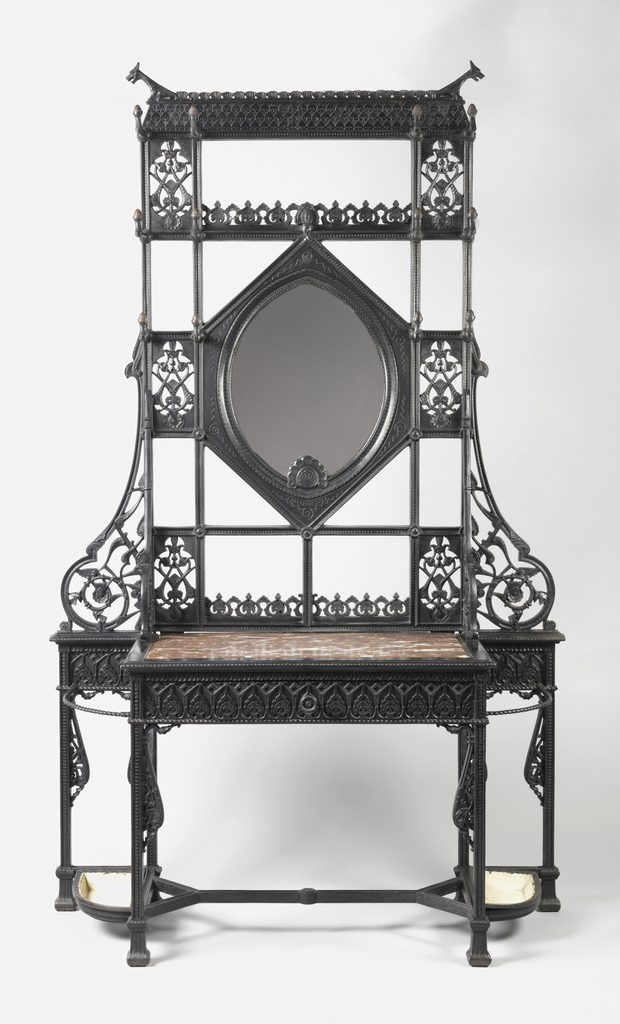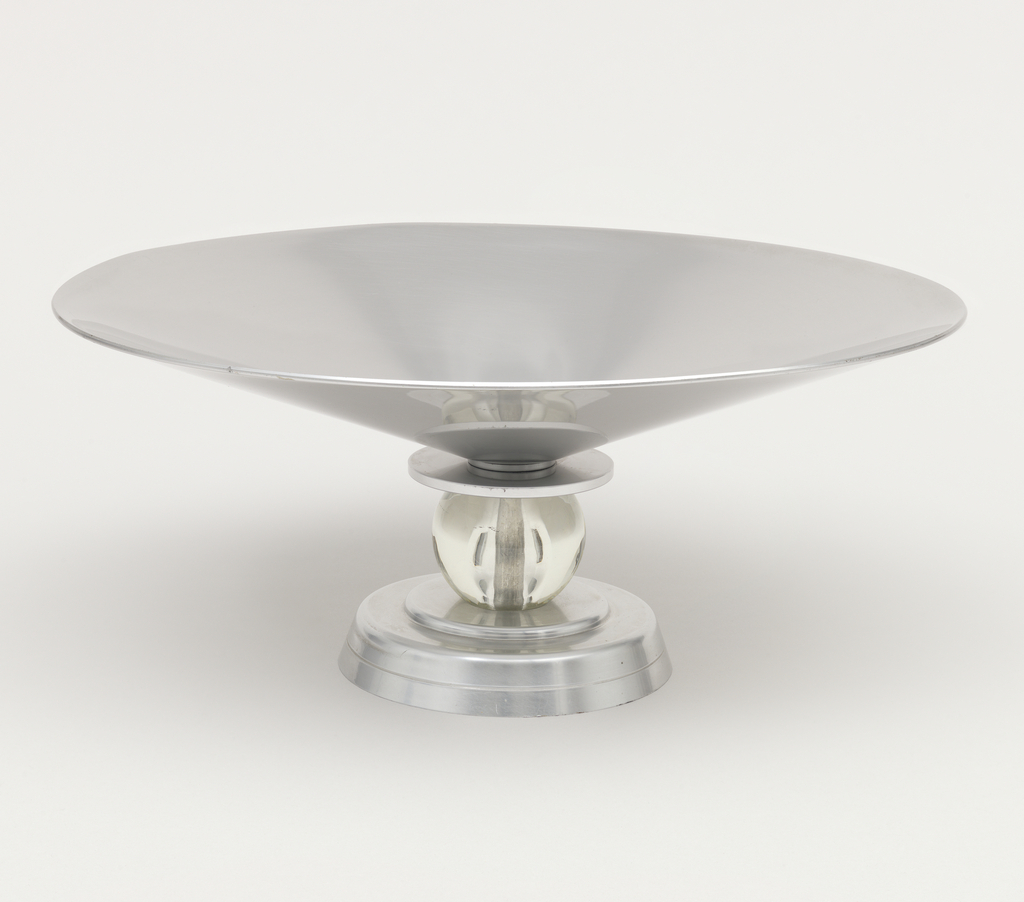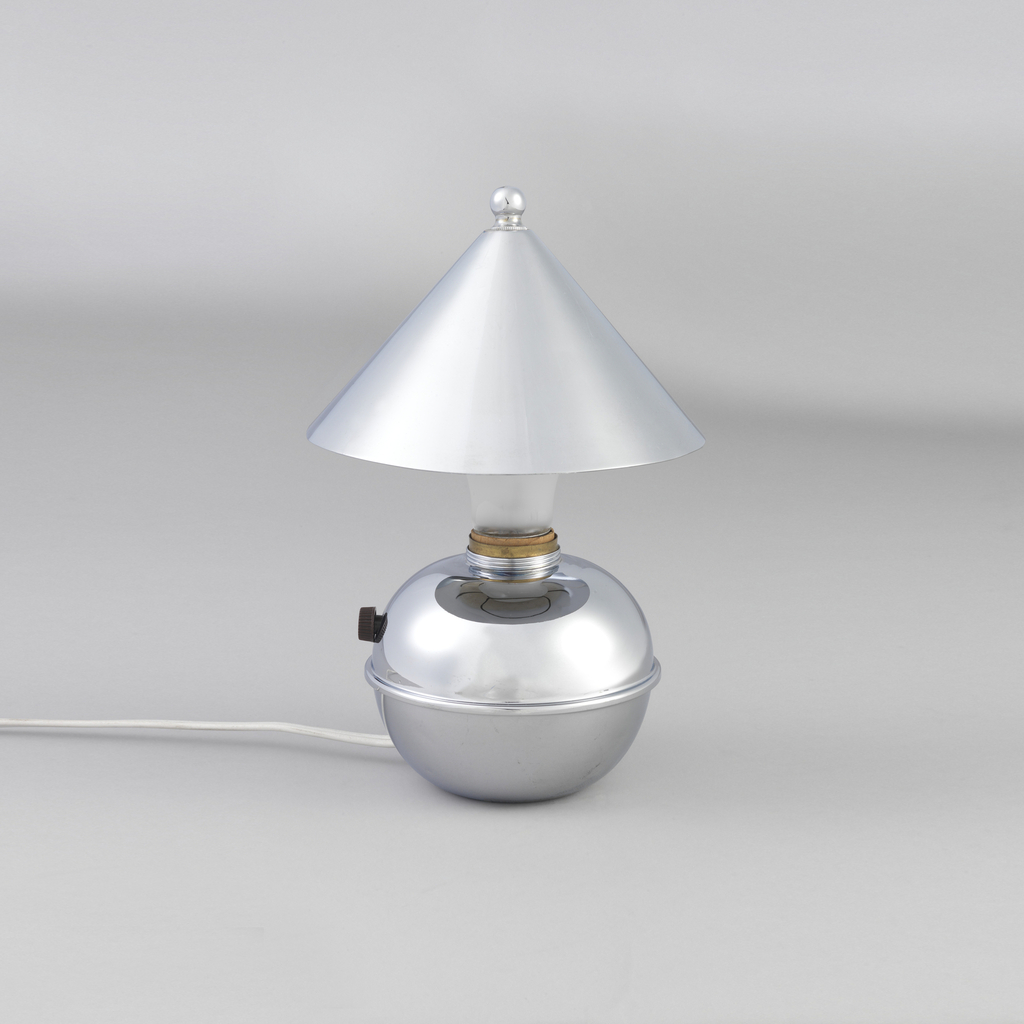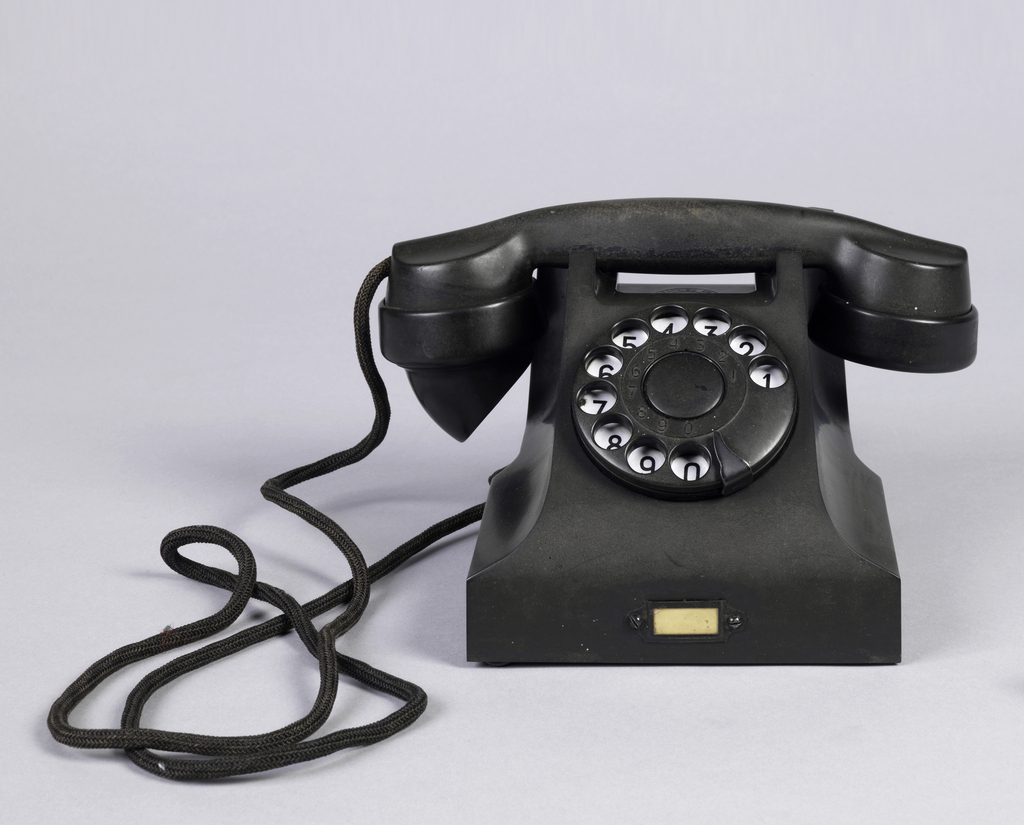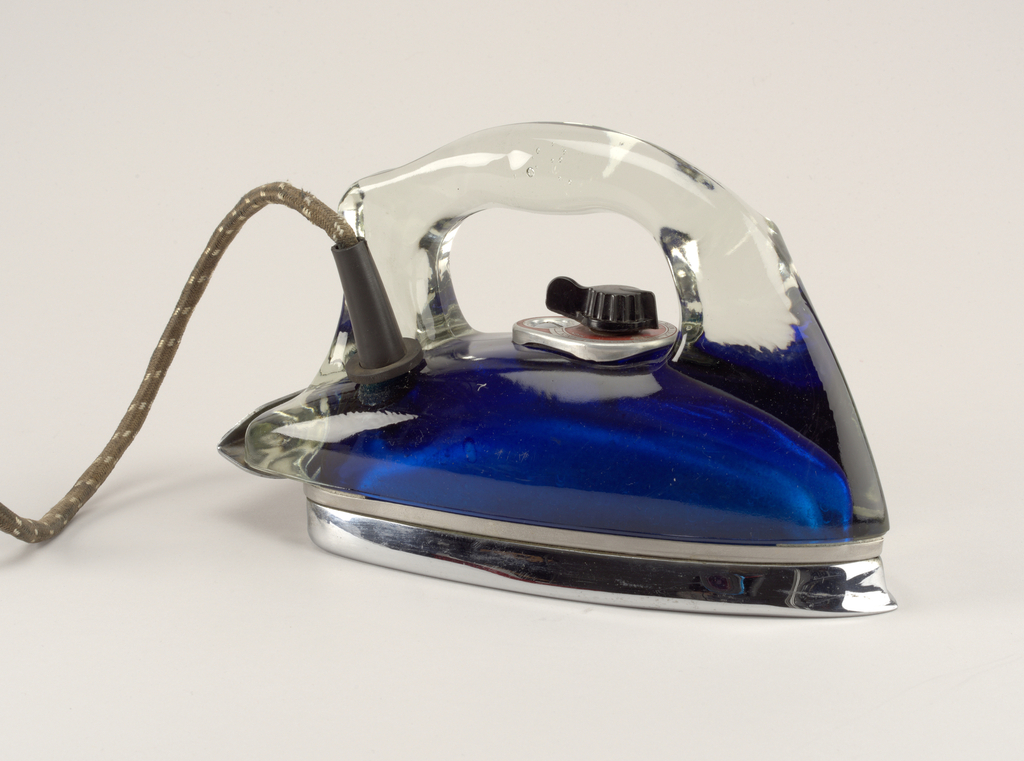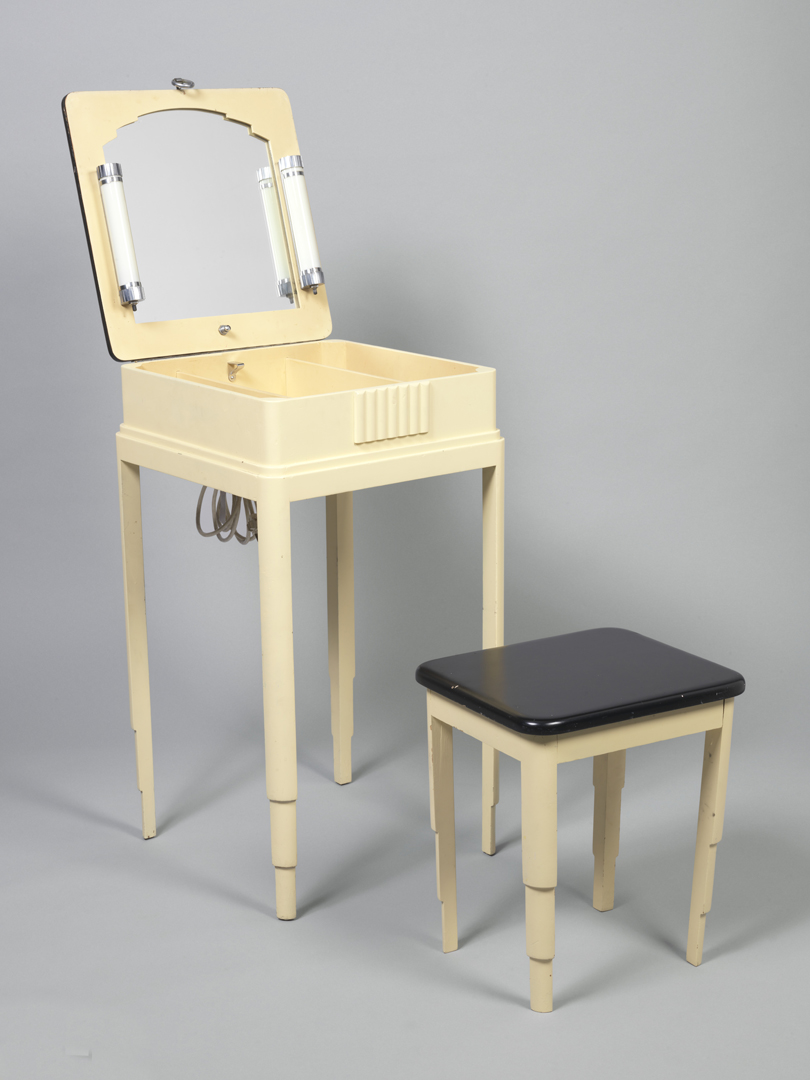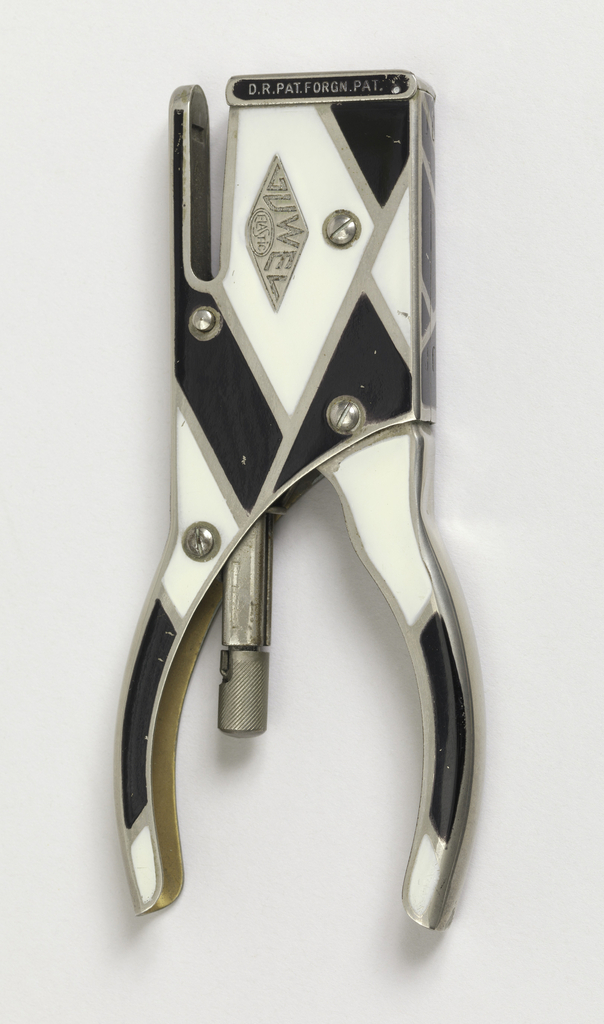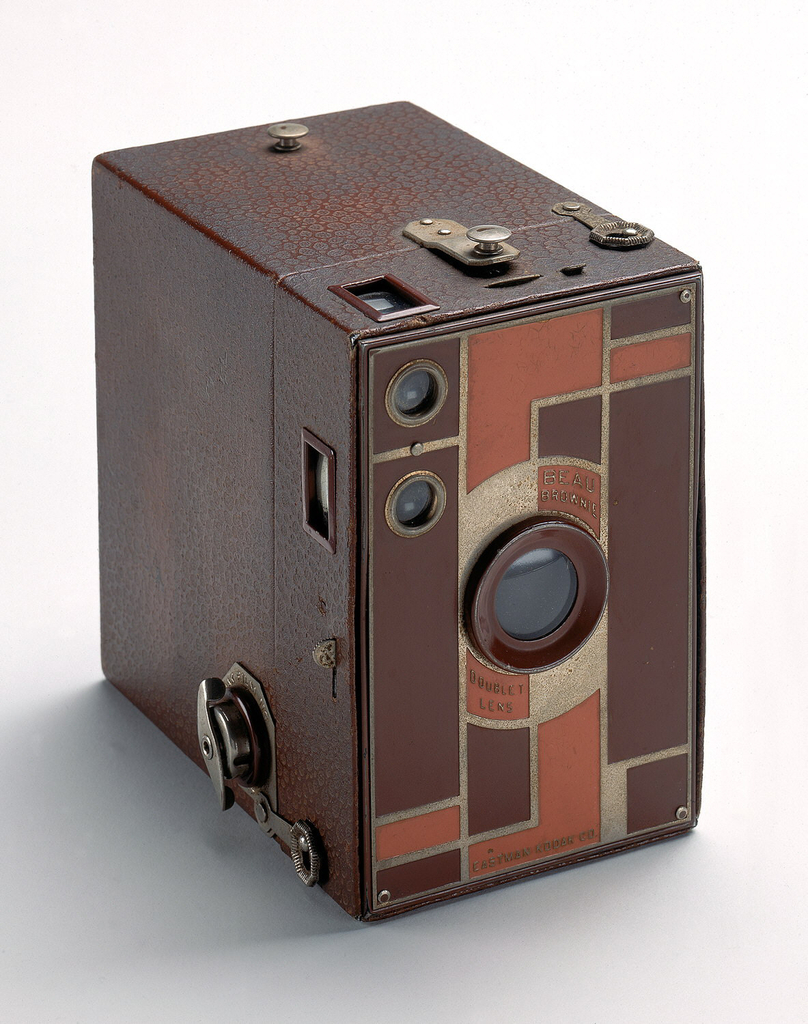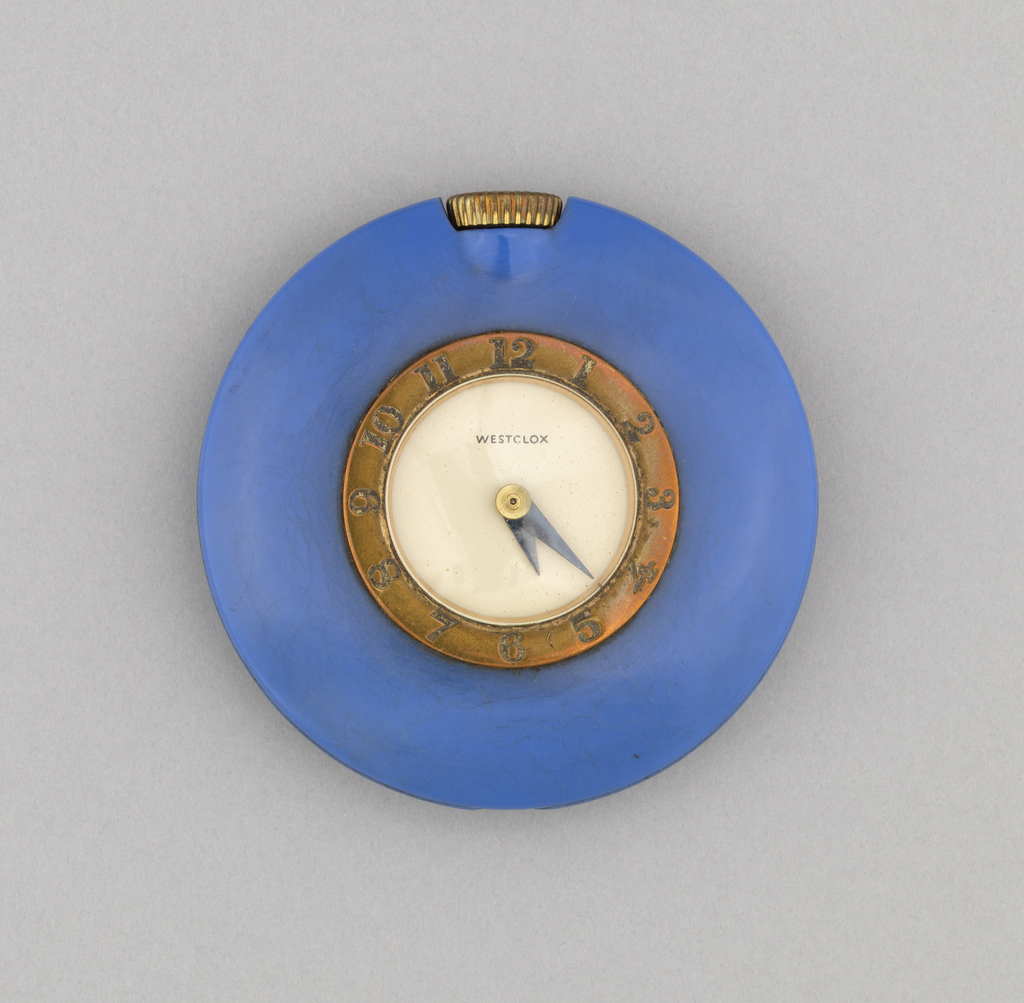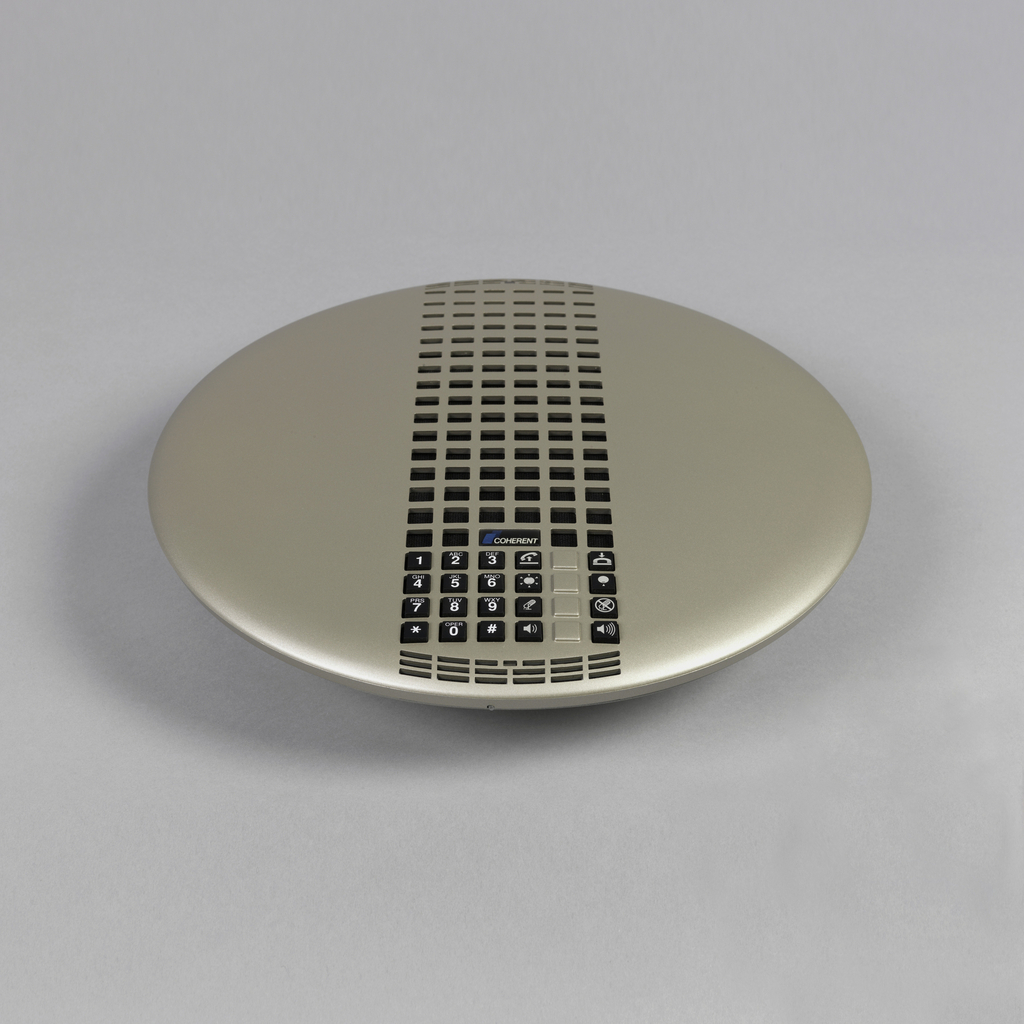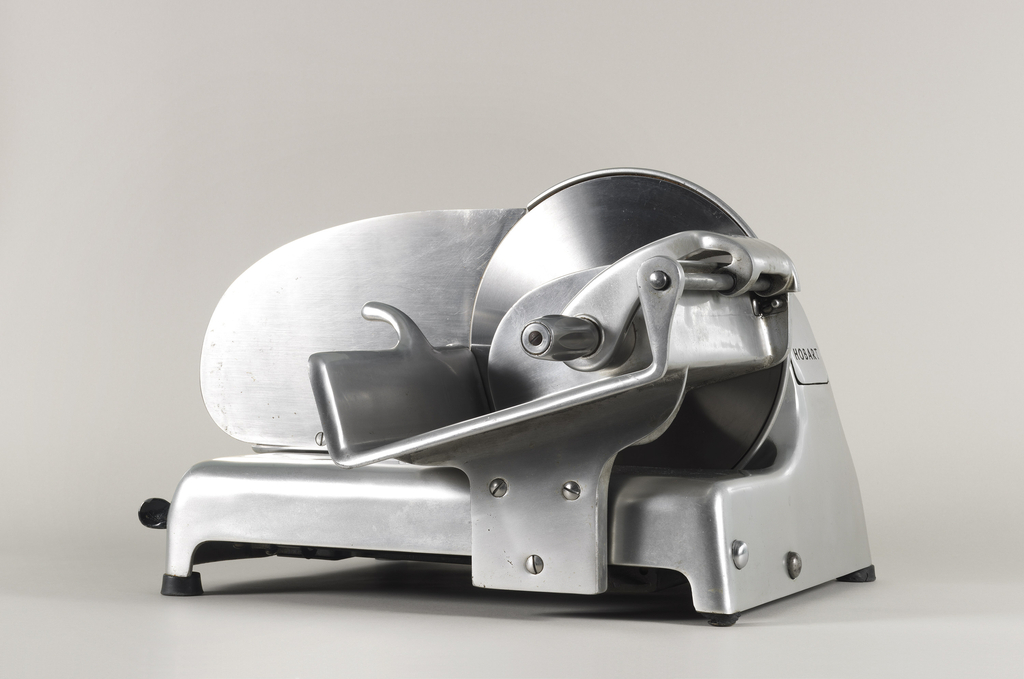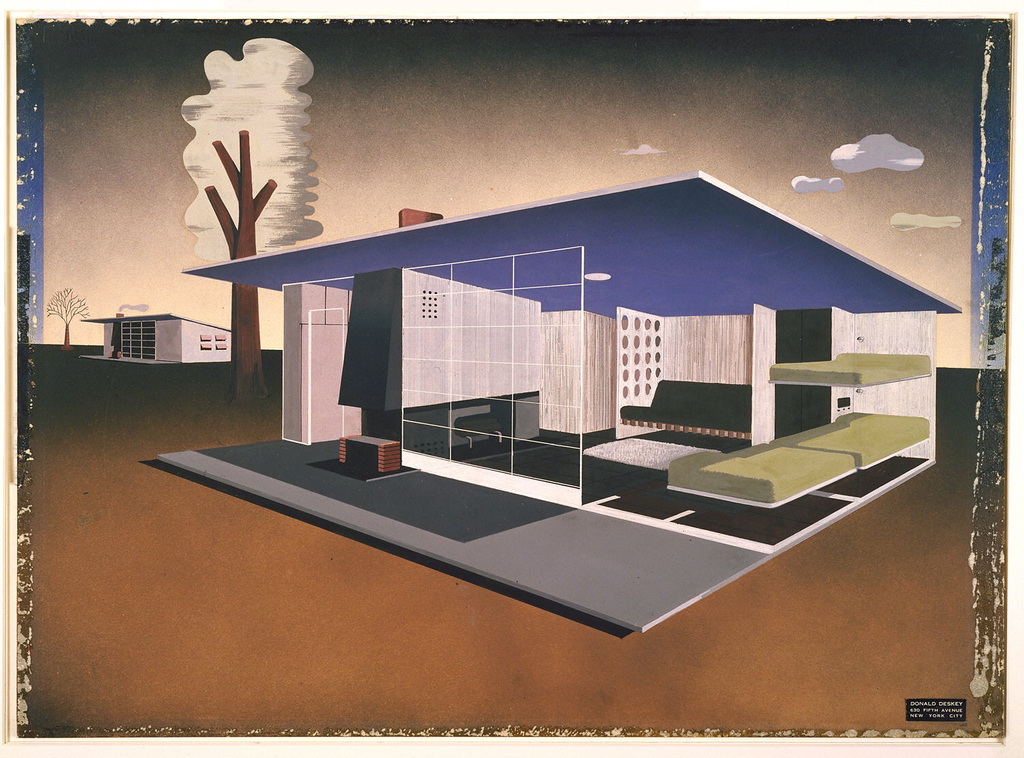The phantasmal world of Dr. Christopher Dresser’s ornamentation delights both the eye and the imagination. Dating from 1875, this iron hallstand features all the quintessential elements of Dr. Dresser’s highly stylized ornament. The “spikey” floral and figural motifs—also recognizable in this illustration for two grotesque dado rails—and his angular interlaced arabesques are frequently used in...
It is no coincidence that many of Lurelle Van Arsdale Guild’s 1930’s designs for aluminum tableware reflect his honed knowledge of traditional forms and ornament. Before becoming one of America’s top industrial designers of the early to mid-twentieth century, Guild was an antique furniture dealer and throughout his entire life, a collector and connoisseur of...
Ruth Gerth’s 1931 “Glow Lamp” for Chase Brass and Copper Company is a gleaming example of American modernism with a bit of a dirty secret. The conical shade is topped by a globular finial and clips on to an incandescent bulb, nestled into its fitting atop a spherical base with a horizontal band running around...
Informally known as the Bakelite telephone, the sculptural Ericsson DBH 1001 was a groundbreaking design that set the standard for the shape of the modern plastic telephone. The telephone was a collaborative project between the Electrisk Bureau of Oslo, Norway and the Swedish firm LM Ericsson and Televerket. In 1930 Ericsson hired engineer Christian Bjerknes...
The postwar design era focused largely on improving all aspects of life at home for those who had maintained it during the war and those who were just returning. The remodeled electric iron was one among many postwar innovations, but this Silver Streak iron in particular epitomizes the design period. The Silver Streak’s aerodynamic form...
Lurelle Guild was a prolific industrial designer, producing useful and beautiful objects that modernized the American home spanning from vacuum cleaners to canapé plates. Guild’s usual method was to invent or develop the new product, patent it, and then assign the patent to the manufacturer, charging a fee and royalties. In 1933 and 1934 he...
The design for this stapler was patented in the United States in 1934 by Fridolin Polzer who was at the time working for E.H. Hotchkiss Company, a leading manufacturer of stapling machines, based in Norwalk, Connecticut. In Japanese, the word for “stapler” is “hotchikisu” after the E.H. Hotchkiss Company, which first shipped staplers to Japan...
A “Beau” is as a man greatly concerned with appearance. And like the word “Dandy” it is often applied to men who affect extreme elegance; who are unduly concerned with looking stylish and fashionable; and who place particular importance on leisurely pastimes. We know F. Scott Fitzgerald’s charming Jay Gatsby as a shining example of...
This handbag watch, introduced in 1933 by the Westclox division of the General Time Instruments Corporation, offered the busy modern woman a portable, fashionable and discreet way to manage her time. [1] An alternative to wearing a wristwatch and about the size of a man’s pocket watch, this timepiece was large enough to be easily found...
When Coherent Communications System Corporation decided to create this conference phone their goal was to accommodate the needs of conference calls by incorporating all the necessary telephone elements and electronics into a single, sophisticated speaker/microphone housing. For ease of use and efficiency, the engineers wanted to position the speaker in such a way that the...
Designed more than 70 years ago, the Model 410 meat slicer, also known as the Streamliner, is not just a utilitarian object for the food service industry. It is also a wonderful example of streamlining, a style of Modernism that combines principles of aerodynamic engineering with geometry, often characterized by smooth rhythmic surfaces and forms...
Design that Matters, National Design Award winner for Corporate and Institutional Achievement, is a nonprofit design company that partners with social entrepreneurs to design products that address basic needs in developing countries. Led by cofounder Timothy Prestero, over 850 academic and professional collaborators have worked together to create dozens of product concepts, including a low-cost...
In 1939, the pioneering industrial designer Donald Deskey, was asked to participate in the Contemporary Industrial Arts Exhibition to be held at the Metropolitan Museum of Art in early 1940. For his project, he designed a prefabricated weekend cabin, called “Sportshack,” depicted in this air-brush rendering. The many innovations in the house included a large...
Museum director, Bill Moggridge, in conversation with industrial designer, Scott Wilson.
The Smithsonian’s Cooper-Hewitt has recently acquired several original prototypes and drawings used to develop OXO’s Good Grips product line. Cooper-Hewitt curators identified this line for the museum’s collection because the products were a game-changing innovation iconic of late 20th century design. Watch this video to learn more about the story behind the objects.
